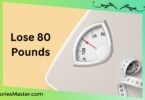Free diet plans are becoming increasingly popular among people who want to lose weight or improve their overall health.
With so many different diets available, it can be overwhelming to decide which one to follow. However, free diet plans offer an affordable and accessible option for those who want to make a change in their lifestyle without breaking the bank.
One of the main benefits of free diet plans is that they are accessible to everyone. Unlike expensive weight loss programs or meal delivery services, free diet plans can be found online or in books, making them available to anyone with an internet connection or access to a library.
This accessibility means that people from all walks of life can benefit from the information and guidance provided by these plans.
Another advantage of free diet plans is that they can be tailored to suit individual needs and preferences.
Many free diet plans offer a range of options, from vegan and vegetarian diets to low-carb and high-protein plans. This variety means that people can choose a plan that suits their lifestyle and dietary requirements, making it easier to stick to the plan and achieve their goals.
Understanding Diet Plans
Diet plans are essential for people who want to lose weight or maintain a healthy weight. A diet plan is essentially a guide that outlines what you should eat and how much of it you should consume to achieve your desired weight goals.
There are various types of diet plans, such as low-carb, low-fat, and balanced diets. Each type has its own set of rules and guidelines. It is crucial to choose a diet plan that suits your lifestyle and preferences.
When following a diet plan, it is essential to keep track of your calorie intake. You can do this by using a food diary or a calorie-tracking app. It can help you monitor your progress and make adjustments if necessary.
It is important to note that diet plans alone may not be enough to achieve your weight goals. Exercise is also a crucial factor in weight loss and maintaining a healthy weight. A combination of a healthy diet and regular exercise can help you achieve your desired weight goals.
In conclusion, diet plans are an effective way to achieve weight loss or maintain a healthy weight. It is essential to choose a diet plan that suits your lifestyle and preferences and to combine it with regular exercise for optimal results.
Benefits of Free Diet Plans
Let’s explore.
Cost-Saving
One of the most significant benefits of free diet plans is the cost-saving aspect. With free diet plans, you don’t have to spend money on expensive meal plans or supplements.
You can create your meal plan using affordable, healthy foods that are readily available at your local grocery store. This approach can help you save money in the long run and stick to your diet plan without breaking the bank.
Flexibility
Free diet plans offer more flexibility than traditional meal plans. You can create a diet plan that suits your lifestyle, dietary preferences, and health goals.
With free diet plans, you can adjust your meal plan as needed to accommodate your schedule, budget, or food preferences. This flexibility allows you to create a sustainable diet plan that you can stick to in the long run.
Variety
Free diet plans offer a wide range of food options, allowing you to incorporate a variety of healthy foods into your diet. You can choose from a variety of fruits, vegetables, whole grains, lean proteins, and healthy fats to create a well-rounded meal plan.
This variety ensures that you get all the nutrients your body needs to stay healthy while enjoying a delicious and satisfying diet.
In summary, free diet plans offer several benefits, including cost-saving, flexibility, and variety. By creating a diet plan that suits your lifestyle and dietary preferences, you can achieve your health goals while enjoying delicious and healthy food.
Types of Free Diet Plans
Low-Carb Diet Plans
One of the most popular types of free diet plans is the low-carb diet. This type of diet restricts the intake of carbohydrates and encourages the consumption of protein and fat.
The idea behind this diet is to force the body to burn fat for energy instead of carbohydrates. Some of the most popular low-carb diets include the Atkins Diet, the South Beach Diet, and the Paleo Diet.
Vegan Diet Plans
Veganism is a lifestyle that involves avoiding the consumption of animal products. A vegan diet plan consists entirely of plant-based foods.
This type of diet can be very healthy, as it encourages the consumption of fruits, vegetables, whole grains, and legumes. However, it can also be challenging to get enough protein and other essential nutrients without consuming animal products.
Gluten-Free Diet Plans
A gluten-free diet plan eliminates gluten, which is a protein found in wheat, barley, and rye. This type of diet is necessary for people with celiac disease, as consuming gluten can cause damage to the small intestine.
However, some people without celiac disease also choose to follow a gluten-free diet for other health reasons. It’s important to note that a gluten-free diet can be challenging to follow, as many foods contain gluten.
Keto Diet Plans
The keto diet is a low-carb, high-fat diet that has gained popularity in recent years. This type of diet encourages the consumption of foods that are high in fat and low in carbohydrates.
The idea behind this diet is to force the body into a state of ketosis, where it burns fat for energy instead of carbohydrates. However, it’s important to note that the keto diet can be challenging to follow, as it requires a significant reduction in carbohydrate intake.
Overall, there are many different types of free diet plans available, each with its own set of benefits and challenges. It’s important to choose a diet plan that is sustainable and provides all of the nutrients your body needs.
How to Choose a Free Diet Plan
Consider Your Lifestyle
Before choosing a free diet plan, consider your lifestyle. Take into account your daily routine, work schedule, and social life. If you have a busy schedule, look for a plan that is easy to follow and doesn’t require too much preparation time.
If you have a lot of social events, choose a plan that allows for flexibility and doesn’t restrict certain foods too much.
Understand Your Nutritional Needs
It’s important to understand your nutritional needs when choosing a free diet plan. Consider any health conditions or dietary restrictions you may have, such as food allergies or intolerances.
Look for a plan that provides a balanced mix of nutrients, including protein, carbohydrates, and healthy fats. You may also want to consider a plan that includes a variety of foods to ensure you are getting all the necessary vitamins and minerals.
Assess The Plan’s Sustainability
When choosing a free diet plan, it’s important to assess the plan’s sustainability. Look for a plan that you can realistically stick to long-term.
Avoid plans that are too restrictive or require you to cut out entire food groups, as these can be difficult to maintain over time. Instead, look for a plan that promotes a healthy and balanced approach to eating.
Overall, choosing a free diet plan that fits your lifestyle, and nutritional needs, and is sustainable is key to achieving your health goals.
Implementing the Diet Plan
Setting Realistic Goals
When starting a free diet plan, it’s important to set realistic goals for yourself. Setting unattainable goals can lead to frustration and disappointment, which can cause you to give up on your diet altogether.
Instead, set small, achievable goals that you can work towards over time. For example, aim to lose one or two pounds a week, or to eat five servings of fruits and vegetables each day.
Meal Planning and Preparation
Meal planning and preparation are key to successfully implementing a free diet plan.
Start by planning your meals for the week ahead, taking into account your dietary requirements and any restrictions you may have. Make a grocery list and stick to it when you go shopping to avoid impulse buys.
When preparing your meals, aim to use fresh, whole ingredients as much as possible.
This will help you to avoid processed foods, which are often high in calories, sugar, and unhealthy fats. Consider batch cooking and meal prepping to save time during the week.
It’s also important to stay hydrated throughout the day. Aim to drink at least eight glasses of water a day, and avoid sugary drinks and alcohol.
By setting realistic goals and planning and preparing your meals in advance, you can successfully implement a free diet plan and achieve your health and wellness goals.
Monitoring Progress
Once you have started a free diet plan, it is important to monitor your progress to ensure that you are on track to achieving your goals. Here are some ways to monitor your progress:
Weighing Yourself
Weighing yourself regularly can help you track your progress. However, it is important to keep in mind that weight can fluctuate due to factors such as water retention, so it is best to weigh yourself at the same time each day and track your weight over time.
Measuring Your Body
Measuring your body can also help you track your progress. You can measure your waist, hips, thighs, and other areas to see if you are losing inches. This can be a better indicator of progress than weight alone.
Keeping a Food Diary
Keeping a food diary can help you track what you are eating and ensure that you are sticking to your diet plan. You can use an app or a notebook to record what you eat and drink, as well as the portion sizes.
Taking Progress Photos
Taking progress photos can be a great way to see how your body is changing over time. Take photos from the same angle and in the same lighting each time to get an accurate comparison.
By monitoring your progress, you can make adjustments to your diet plan if necessary and stay motivated to reach your goals.
Common Pitfalls and How to Avoid Them
Unrealistic Expectations
One of the most common pitfalls of free diet plans is setting unrealistic expectations.
Many people start a diet with the expectation of losing a significant amount of weight in a short amount of time. However, this can be dangerous and lead to disappointment and frustration if the results are not achieved.
To avoid this pitfall, it is important to set realistic goals and expectations. A healthy rate of weight loss is around 1-2 pounds per week.
It is also important to remember that weight loss is not the only measure of success. Other factors, such as improved energy levels and better sleep, should also be considered.
Lack of Variety
Another common pitfall of free diet plans is a lack of variety. Many people get bored with their diet and end up giving up or cheating on their plans. This can be especially true if the diet is too restrictive or limited in terms of food choices.
To avoid this pitfall, it is important to incorporate a variety of healthy foods into your diet. Experiment with different recipes and try new foods to keep things interesting.
It can also be helpful to plan out your meals and snacks in advance to ensure that you have a variety of options throughout the day.
Ignoring Portion Sizes
A third common pitfall of free diet plans is ignoring portion sizes. Even healthy foods can lead to weight gain if consumed in large quantities. It is important to pay attention to portion sizes and ensure that you are eating the appropriate amount of food for your body.
To avoid this pitfall, it can be helpful to measure your food or use portion control tools, such as smaller plates or containers. It is also important to listen to your body and stop eating when you are full, rather than continuing to eat until your plate is empty.
Overall, by setting realistic expectations, incorporating a variety of healthy foods, and paying attention to portion sizes, you can avoid common pitfalls and achieve success with a free diet plan.
Free Diet Plans – Conclusion
In conclusion, there are numerous free diet plans available online that can help you achieve your health and fitness goals. By understanding your body’s nutritional needs and making smart food choices, you can lose weight, boost your energy levels, and improve your overall health.
It’s important to remember that no single diet plan is right for everyone.
You should always consult with a healthcare professional before starting any new diet or exercise regimen. Additionally, it’s crucial to listen to your body and make adjustments as needed to ensure that you’re getting the nutrients you need to stay healthy.
When choosing a free diet plan, be sure to consider factors such as your lifestyle, dietary preferences, and any health conditions you may have. Look for plans that offer a variety of foods and allow for flexibility in meal planning to help you stay on track and avoid boredom.
Finally, remember that a healthy diet is just one part of a healthy lifestyle. Be sure to incorporate regular exercise, stress management techniques, and plenty of rest into your routine to achieve optimal health and wellness.









